 |
by Charles Pulliam-Moore on (#6YWYF)
James Gunn knows that most people are familiar with Superman's origin story, which is why DC Studios' new feature about the Man of Steel opens at a point when he has already become a world famous superhero. Instead of rehashing the tragic beats of Krypton's destruction, the movie is punctuated with moments that show you [...]
|
The Verge
| Link | https://www.theverge.com/ |
| Feed | http://www.theverge.com/rss/index.xml |
| Updated | 2025-11-08 20:32 |
 |
by Jay Peters on (#6YWYG)
US national debt currently exceeds $36 trillion, but if you want to toss a few extra dollars of your own money to try and help bring that down, you can now do so from a Venmo account, as spotted by NPR's Jack Corbett. You can see the Venmo payment option on the Treasury Department's Gifts [...]
|
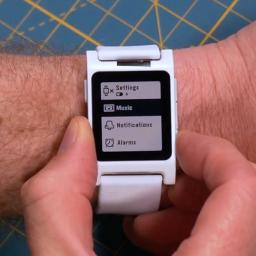 |
by Victoria Song on (#6YWYH)
Good news for Pebble fans. Not only are the Pebble watches coming back, they'll also officially be called Pebble watches. Great news - we've been able to recover the trademark for Pebble! Honestly, I wasn't expecting this to work out so easily," Core Devices CEO Eric Migicovsky writes in an update blog. Core 2 Duo [...]
|
 |
by Andrew Webster on (#6YWYJ)
Netflix seems to have finally settled on something resembling a strategy for its gaming efforts, and one of the key pillars is games tied to its shows and movies. That's how we got the likes of Squid Game: Unleashed and Black Mirror's Thronglets. Now, as Happy Gilmore 2 hits the streaming service, it's accompanied by [...]
|
 |
by Emma Roth on (#6YWYK)
Lyft is partnering with Benteler Mobility to launch a self-driving shuttle service. In late 2026, Lyft plans to deploy the company's all-electric Holon Urban shuttles in airports and cities around the US, allowing users to book trips from its ride-sharing app. Holon, a subsidiary of Benteler, says its rectangular bus has enough room to fit [...]
|
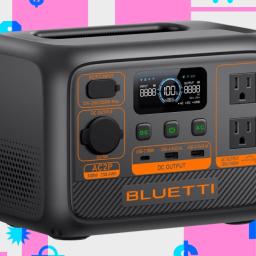 |
by Brandon Russell on (#6YWVK)
We're in the middle of prime camping season, when the days are longer and the temperatures are warmer. While it's the perfect time to unplug, you don't have to go completely off the grid, as Bluetti's AC2P Portable Power Station can power your essential gadgets when no traditional power sources are available. And right now, [...]
|
 |
by Barbara Krasnoff on (#6YWVM)
Back in 2024, we described how the then-new iOS 18 enabled you to tint your homescreen icons, allowing you to tweak the look of your iPhone's display. Now, with Apple's introduction of its Liquid Glass design for iOS 26, you can make your icons completely clear (assuming you're a fan of the new invisible look). [...]
|
 |
by Emma Roth on (#6YWVN)
Elden Ring Nightreign is finally getting a two-player mode. FromSoftware announced on Friday that it's adding Duo Expeditions" in a patch coming on July 30th, allowing you to take on enemies across Limveld with one other friend. Since Elden Ring Nightreign's launch in May, the title has only let you play by yourself or in [...]
|
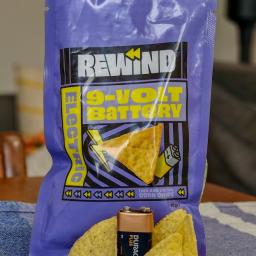 |
by Dominic Preston on (#6YWVP)
I get a lot of odd pitches in my inbox, but 9V battery-flavored corn chips" still stopped me in my tracks. My mind was ringing with questions (What? Who? Why!?!), but most importantly: What are they going to taste like? This limited edition flavor comes from Rewind, a new brand launching in Europe, starting with [...]
|
 |
by Lauren Feiner on (#6YWVQ)
President Donald Trump's plan to promote America's AI dominance involves discouraging "woke AI," slashing state and federal regulations, and laying the groundwork to rapidly expand AI development and adoption. Trump's proposal, released on July 23rd, is a sweeping endorsement of the technology, full of guidance that ranges from specific executive actions to directions for future [...]
|
 |
by Cameron Faulkner on (#6YWVR)
The Asus ROG Zephyrus G14 has long been a Verge-favorite gaming laptop, and we consider it to be the very best one that you can buy. This year, the lineup became even more powerful and spec-packed while still retaining the low-profile and portable 14-inch design that initially drew us to it. If you're looking to [...]
|
 |
by Tom Warren on (#6YWVS)
Mustafa Suleyman, Microsoft's AI CEO, has a vision of Copilot that involves it being so highly personalized that it will age." Microsoft has been increasingly pushing Copilot to be a personalized AI assistant, with a big redesign last year that included a conversational voice mode. Now, Suleyman's Microsoft AI team is launching a new Copilot [...]
|
 |
by Jess Weatherbed on (#6YWVT)
Platforms like Reddit, Bluesky, Discord, and Pornhub have been rolling out mandatory age verification requirements in the UK over the past few weeks to comply with new online safety rules. While the age-gating aims to keep children from accessing pornographic material and other "harmful content" outlined by the UK's communications regulator Ofcom, there's a glaring [...]
|
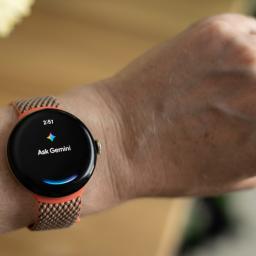 |
by Allison Johnson on (#6YWS6)
I'm just getting acquainted with Gemini on the Pixel Watch I'm wearing when it tells me that there's a kind of pastry called "nun's farts." This relationship is off to a good start. "Nun's farts" was a totally appropriate response, by the way. I'd asked it for a list of pastries with silly names, prompted [...]
|
 |
by Jacob Kastrenakes on (#6YWPV)
Apple has had two months to refine Liquid Glass since introducing the design language at WWDC. It's dialed the effect back, then amped it back up. It's addressed some of the biggest complaints - the Control Center, for one - and left us to live with some of the others. So after all the tweaks, [...]
|
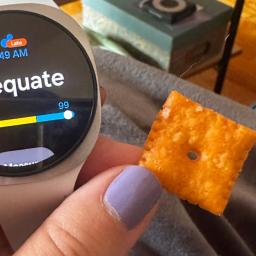 |
by Victoria Song on (#6YWPW)
If I were to believe the Samsung Galaxy Watch 8, I don't eat enough fruits and vegetables. Normally, smartwatches don't make judgments about your nutritional intake. But this year, Samsung introduced a new experimental feature called Antioxidant Index. Using blue, yellow, and infrared LEDs, the watch's sensor can pick up carotenoid levels in your skin. [...]
|
 |
by Tom Warren on (#6YWPX)
Microsoft's controversial Recall feature, that automatically screenshots nearly everything on a Copilot Plus PC, is meeting resistance from app developers. Signal kicked off a trend of blocking Recall earlier this year, with AdGuard and the Brave browser now also blocking the Windows AI feature. AdGuard calls Recall a privacy concern" in a blog post outlining [...]
|
 |
by Jess Weatherbed on (#6YWN7)
A US district court judge has withdrawn his decision in a biopharma securities case after lawyers noted that his opinion referenced fake quotes and other erroneous case information - mistakes mirroring errors in other legal cases that have been attributed to artificial intelligence tools. In a letter sent to New Jersey Judge Julien Xavier Neals, [...]
|
 |
by Dominic Preston on (#6YWN8)
Google has released a new version of ChromeOS that allows you to sync desktops between devices, ideal for anyone who works across more than one Chromebook. It also significantly improves the AI wallpapers available on Chromebook Plus laptops with a completely freeform prompting field. Desk sync is designed to help you pick up where you [...]
|
 |
by Lauren Feiner on (#6YWEA)
The Federal Communications Commission (FCC) has approved Skydance's $8 billion purchase of CBS-owner Paramount after the companies agreed to end diversity, equity, and inclusion (DEI) programs but feature a diversity of viewpoints from across the political and ideological spectrum." In light of the Trump administration's critiques of CBS's alleged anti-conservative bias - including collecting a [...]
|
 |
by Richard Lawler on (#6YWAW)
Starlink users reported they couldn't connect to SpaceX's satellite internet service for a few hours on Thursday afternoon before service was eventually restored. Widespread Starlink outages, like the ones we reported on in 2022 and 2023, have been rare, and this appears to be the first one in 2025. The outage began around 3:15PM ET [...]
|
 |
by Mia Sato on (#6YWCY)
In a story published earlier this week, a site called NYC Journals" claimed to have a bombshell: that Instagram had suspended the account of New York mayoral candidate Zohran Mamdani for being too socialist." The story claimed that Mamdani's account was down for three hours; it also cited a leaked memo" from inside Instagram that [...]
|
 |
by Sean Hollister on (#6YWAX)
In April, Intel attempted to announce layoffs without announcing layoffs. We have not set any headcount reduction target," Intel spokesperson Sophie Metzger toldThe Verge. But the company has laid off thousands of employees since - and today, in the company's Q2 2025 earnings, it has revealed that Intel will dramatically shrink as a result of [...]
|
 |
by Ash Parrish on (#6YWAY)
VShojo, the VTuber agency that billed itself as talent first," is shutting down. VShojo CEO Justin Gunrun" Ignacio made the announcement today on X, writing, I take full responsibility for the decisions that led us to this point." Earlier this week, VShojo came under fire as Ironmouse, the agency's top-performing VTuber, announced she was leaving [...]
|
 |
by Emma Roth on (#6YWAZ)
On Thursday, Google launched Web Guide, a new AI-powered search feature that groups links in helpful ways" for people who opt in to the test on Labs. Web Guide runs on a custom version of Google's Gemini AI model to process search queries, reorganizing the traditional 10 blue links" by sorting results and finding related [...]
|
 |
by Adi Robertson on (#6YWB0)
After delivering a rambling celebration of tariffs and a routine about women's sports, President Donald Trump entertained a crowd, which was there to hear about his new AI Action Plan, with one his favorite topics: "wokeness." Trump complained that AI companies under former President Joe Biden "had to hire all woke people," adding that it [...]
|
 |
by Barbara Krasnoff on (#6YW7M)
People with Apple developer accounts have had all the fun with the iOS 26 beta so far (and yes, if you missed it, there's a new naming system now), but now that the public betas are out, anyone can try the new features. Setting up the public beta is slightly less involved than setting up [...]
|
 |
by Andrew J. Hawkins on (#6YW7N)
In an earnings call Wednesday, Tesla CEO Elon Musk "let the cat out of the bag": The new, more affordable electric vehicle the company has been touting for over a year, and that has been singled out as the one thing that could pull Tesla out of its sales rut, wasn't new at all. It [...]
|
 |
by Jay Peters on (#6XW3E)
Apple recently announced iOS 26, the next major software update for iPhones, and it's packed with a whole bunch of new features. The biggest change is a new design, but there are lots of smaller improvements and additions as well that could make a difference in how you use your iPhone every day. If you [...]
|
 |
by Antonio G. Di Benedetto on (#6YW4Q)
Apple's macOS Tahoe 26 public beta is finally available, and with it the same Liquid Glass design language that's coming to the rest of Apple's operating systems. It's a simultaneously weird yet milquetoast update. I've been testing the developer beta on an M4 MacBook Air since WWDC in June, and after using it through to [...]
|
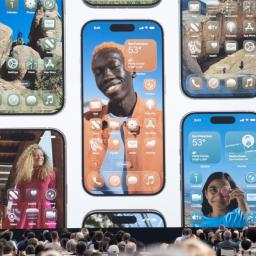 |
by Allison Johnson on (#6YW4R)
If you want to give Liquid Glass - Apple's new design language in iOS 26 - an uncharitable nickname, well, it's right there for the taking. The new look has its fair share of haters, and I fully expected to be one of them when I downloaded the beta. But while there are aspects of [...]
|
 |
by Todd Haselton on (#6YW4S)
I've gone back and forth over the years on whether or not I can actually work from an iPad. The answer has always been: sort of. I can write on an iPad. I can edit on an iPad. So, I guess I've always been able to "work" from an iPad. But with a Magic Keyboard [...]
|
 |
by Victoria Song on (#6YW4T)
Apple just launched the watchOS 26 public beta, which means everyone can now try the latest software heading to the Apple Watch this fall. That includes new Apple Intelligence features, such as Workout Buddy, new messaging features, the Wrist Flick gesture, and more. I've been using the developer beta and have some thoughts to share. [...]
|
 |
by Jay Peters on (#6YW4V)
Apple has officially released the first public betas for its next major software updates. The list of new betas includes iOS 26, iPadOS 26, macOS Tahoe 26, watchOS 26, and tvOS 26. The biggest thing you'll notice about the software updates is that they have a new design language Apple is calling Liquid Glass." The [...]
|
 |
by Tom Warren on (#6YW4W)
Microsoft CEO Satya Nadella didn't send a company-wide memo when the software maker laid off as many as 9,000 employees earlier this month. Now, Nadella is finally addressing what's on many Microsoft employee's minds: layoffs. I want to speak to what's been weighing heavily on me, and what I know many of you are thinking [...]
|
 |
by Jay Peters on (#6YW4X)
Google's rumored Pixel Watch 4 may charge on its side rather than on its back, based on leaked official renders of the watch published by Android Headlines. The watch may also get a roughly 25 percent improvement in charging speed over the Pixel Watch 3. Without charging contacts on the back, the Pixel Watch 4 [...]
|
 |
by Tom Warren on (#6YW4Y)
Earlier this year, I heard that Microsoft engineers were preparing server capacity for OpenAI's next-generation GPT-5 model, arriving as soon as late May. After some additional testing and delays, sources familiar with OpenAI's plans tell me that GPT-5 is now expected to launch as early as next month. OpenAI CEO Sam Altman recently revealed on [...]
|
 |
by Andrew Webster on (#6YW27)
It's been a long time coming, but EA is finally ready to show off the next Battlefield. The new game, dubbed Battlefield 6, takes place during some kind of wide-ranging war; the debut trailer opens with a presidential address punctuated by explosions and destruction that seem to be happening all over the world. There's not [...]
|
 |
by Brandt Ranj on (#6YW28)
It's annoying to think about school starting in the middle of summer, but we've already begun to see glimpses of back-to-school deals, including a discount on the AirPods Max (USB-C) that brings them down to $449.99 ($100 off) at Amazon, Best Buy, and Walmart. Apple's latest over-ear headphones share many features with its earbuds, but [...]
|
 |
by Ash Parrish on (#6YW29)
On July 21st, 6,669-year-old demon queen Ironmouse posted an 11-minute video, explaining that she is leaving her talent management agency, VShojo. Ironmouse is a VTuber, or virtual YouTuber," which is a type of a streamer who doesn't usually show their human face and creates elaborate digital personas to make content instead. I recently found out [...]
|
 |
by Jess Weatherbed on (#6YW2A)
Figma Make, the prompt-to-app coding tool that Figma introduced earlier this year, is now available for all users. Similar to AI coding tools like Google's Gemini Code Assist and Microsoft's GitHub Copilot, Figma Make allows users to build working prototypes and apps using natural language descriptions, instead of needing to have innate coding skills. While [...]
|
 |
by Jay Peters on (#6YVYJ)
Indiegogo is being acquired by the board game crowdfunding platform Gamefound, which plans on integrating Indiegogo's global community of 38 million members with Gamefound's state-of-the-art crowdfunding technology," the companies announced this morning. Gamefound has built the best tech in crowdfunding, hands down," Indiegogo CEO Julie dePontbriand tells The Verge. By joining forces, we're aligning with [...]
|
 |
by Vjeran Pavic on (#6YVYH)
Right now, there are five Fujifilm cameras that are using the exact same 40MP sensor. So picking the right one for you can be confusing, but fret not. Most Fuji cameras offer similar results, and your choice might come down to just the form factor. The good news is that Fujifilm's latest camera, the X-E5, [...]
|
 |
by Emma Roth on (#6YVYK)
iRobot's first roller mop-equipped robovac has a unique trick to help keep your carpets dry. Announced this week, the Roomba Max 705 Combo is an upgraded version of the robovac iRobot launched in April, offering a first-of-its-kind" mop cover that it automatically deploys when cleaning carpets. Unlike with mopping pads, many robovacs with roller mops [...]
|
 |
by Jay Peters on (#6YVYP)
After launching the Kindle Colorsoft last year - its first Kindle with a color screen - Amazon is adding two new iterations of the e-reader to its lineup today: a cheaper Colorsoft with 16GB of storage for $249.99 and a kids-focused bundle for $269.99. The Kindle Colorsoft Signature Edition will still be available for $279.99. [...]
|
 |
by Jess Weatherbed on (#6YVYN)
Snapchat is launching a new Home Safe feature that makes it easier to inform your loved ones when you have arrived safely after making your way home. Building on the app's existing location capabilities, Snapchat's Home Safe allows you to send an automatic alert to chat conversations with friends to let them know you're back [...]
|
 |
by Jess Weatherbed on (#6YVYM)
Google is injecting more generative AI into its online shopping experience in Search. An upcoming feature for AI Mode will generate images of outfits and decor ideas based on user descriptions, to help people find visually similar products. Also launching is a new tool that allows people to virtually try on clothes. The new AI [...]
|
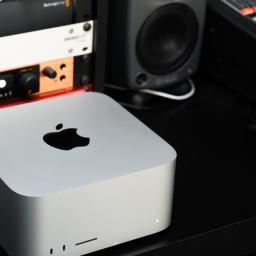 |
by Cameron Faulkner on (#6YVYQ)
Apple announced some big changes to its device protection plans this week with the introduction of AppleCare One. The new service lets you protect three devices for $19.99 per month. That means things like your Apple TV, AirPods Max, and iPad can be covered under one plan at a cost that doesn't fluctuate. And every [...]
|
 |
by Jess Weatherbed on (#6YVT2)
The indie-focused open gaming marketplace Itch.io has abruptly deindexed adult content from its browse and search pages, warning that some games will be permanently removed from the platform. In a blog post on Thursday, Itch.io creator Leaf Corcoran said that the update was due to concerns that the website's payment processors had about the nature [...]
|
 |
by Sean Hollister on (#6YVMC)
We asked for the perfect Lego Nintendo Game Boy... did Lego deliver? After revealing this January that it would take up the challenge, it has revealed a most impressive take on the 1989 classic that'll cost a relatively reasonable $60 in the US. It's already up for preorder today for an October 1st ship date. [...]
|